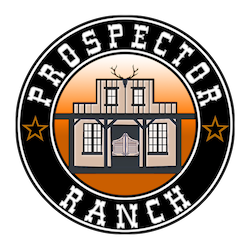Origins of Halloween: Part 1!
Picture to the left by Shovan Datta on Pexels.com. Picture to the right by dogadakisakal on Pexels.com
~ Natalia Radcliffe ~ October has officially begun!
Halloween is coming up quickly. Ever wonder about the origins behind the popular holiday? Well, you’re in luck. Today, we will be telling you a story of how Halloween as we know it came to be.
Pull up a chair. Rest your boots on the ground. Enjoy the warmth of the campfire, and try to not get too scared….
It all started with the ancient Celtic festival of Samhain, marking the end of summer and harvest and the beginning of winter. The Celts were a civilization that lived 2,000 years ago, in the areas known today as Ireland, The United Kingdom, and Northern France. Samhain was a celebration that was held on the evening of October 31, the day before the Celts celebrated their new year. The festival was associated with a time when the barriers between the physical world and the spirit world would be weak, allowing occupants of the “Otherworld” to visit humans. Some “Otherworld” occupants were friendly, like deceased ancestors. One Samhain tradition even included a meal in which households would invite their deceased ancestors to dinner, where they could have the chance to interact with them.
However, some occupants were not so friendly. People often dressed up as monsters and animals, in order to dissuade those spirit world dwellers who would wish to kidnap them.
During Samhain, people believed the presence of beings from the spirit world could make it easier on the the Druids (Celtic priests) of their communities to make predictions for the future.
To kick off the event, the Druids built large bonfires where people would gather around to burn crops and animals as sacrifices to their deities. They would often wear costumes, usually consisting of animal heads and skins. While gathered around the bonfires, they would try to tell each other’s fortunes.
Fast forward decades and decades, the Roman Empire had conquered much of Celtic territory by around 43 A.D. Naturally, with the combination of cultures, the Samhain festival merged with two Roman celebrations: Feralia and Pomona.
Wonder why bobbing for apples is a popular activity on Halloween? It most likely originates from the festival of Pomona, a celebration of the Roman goddess of fruit and trees.
How does this relate to bobbing for apples?
Guess what Pomona’s symbol was.
Wait for it ….
An apple.
Fast forward a few centuries, and Christianity became the main religion for the Roman Empire, and slowly made its way to the Celtic lands, where it blended with older traditions. In 1000 A.D., the church made November 2 All Soul’s Day, a celebration to honor the dead. All Saints Day, also called All-hallows, was celebrated on the day before.
Apples are the symbol of the Roman goddess Pomona, and a popular activity to do on halloween. Apples in bucket picture by Victoria Geisterkatze on Pexels.com.
October 31 started to be known as All Hallow’s Eve, especially in the Celtic regions, where Samhain was originally celebrated.
The name eventually evolved into, you guessed it!
Halloween.
From there, the holiday slowly grew in popularity, changing and evolving as the years went by.
In fact, it wasn’t celebrated a lot in the early days of the USA, when it was still an English colony. Colonial New England, for example, had very strict views on the holiday, due to the rigid Protestant beliefs there. However, in places like Maryland and the southern colonies, the holiday was much more common.
As the various beliefs and customs of different ethnic groups who settled in the colonies merged, Halloween started to take on a unique American version.
What might that be, you may ask?
Well, the fire’s getting quite dim. I think we should turn in for the night. That’ll be a story for next week.
Thumbnail: background picture by QuinceCreative on Pixabay.com
Information obtained from:
https://www.history.com/topics/halloween/history-of-halloween


